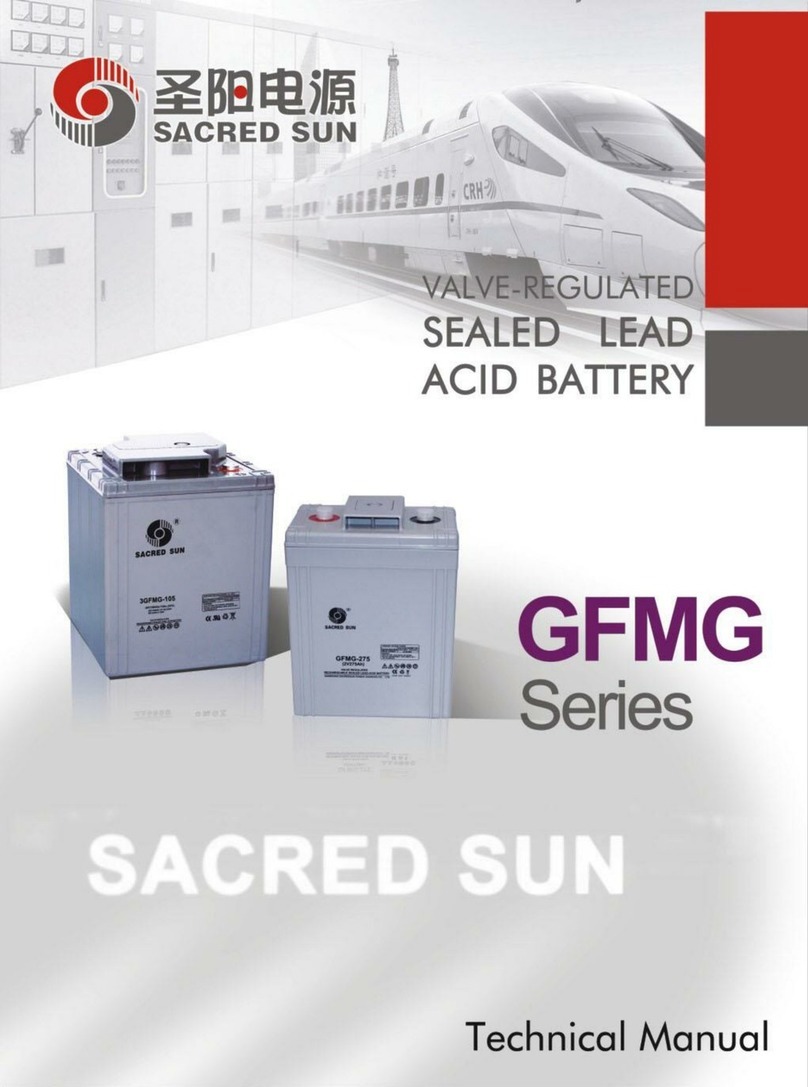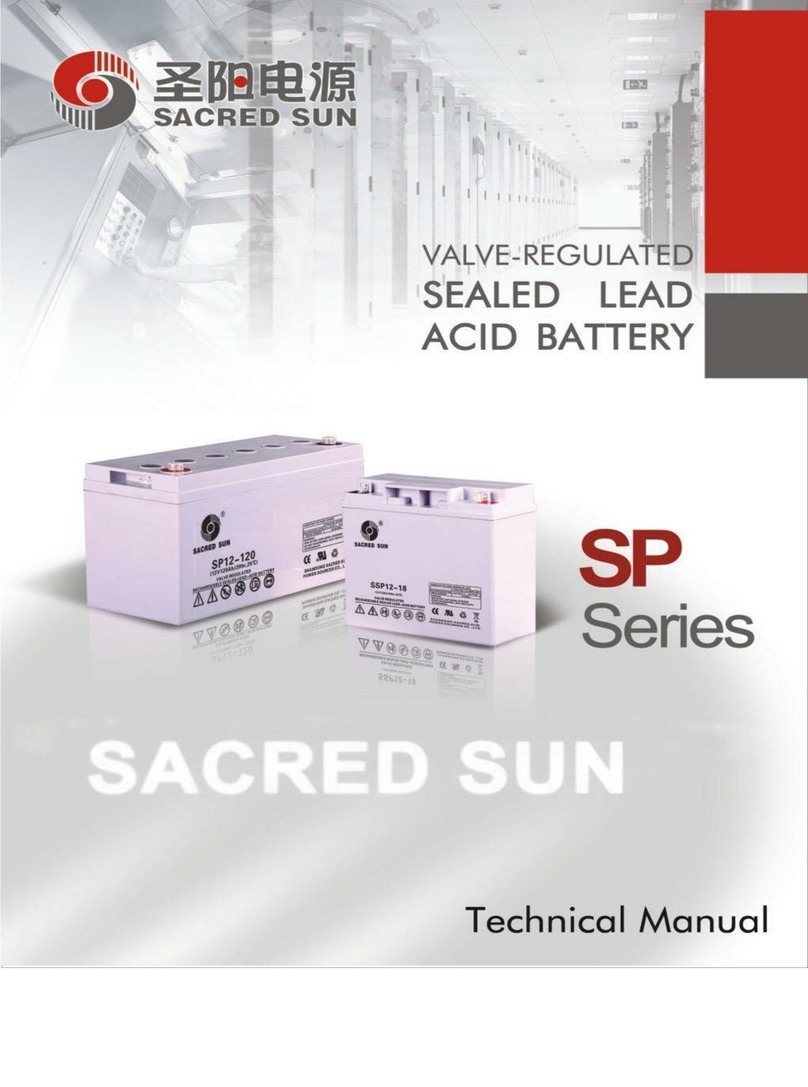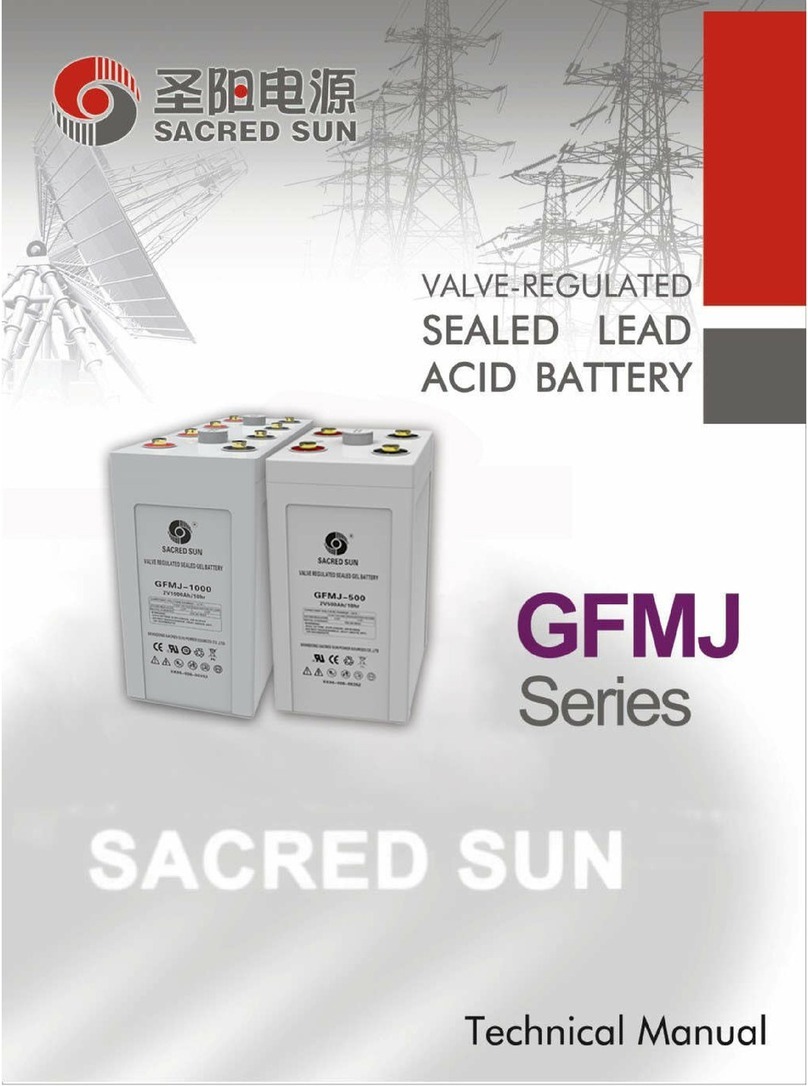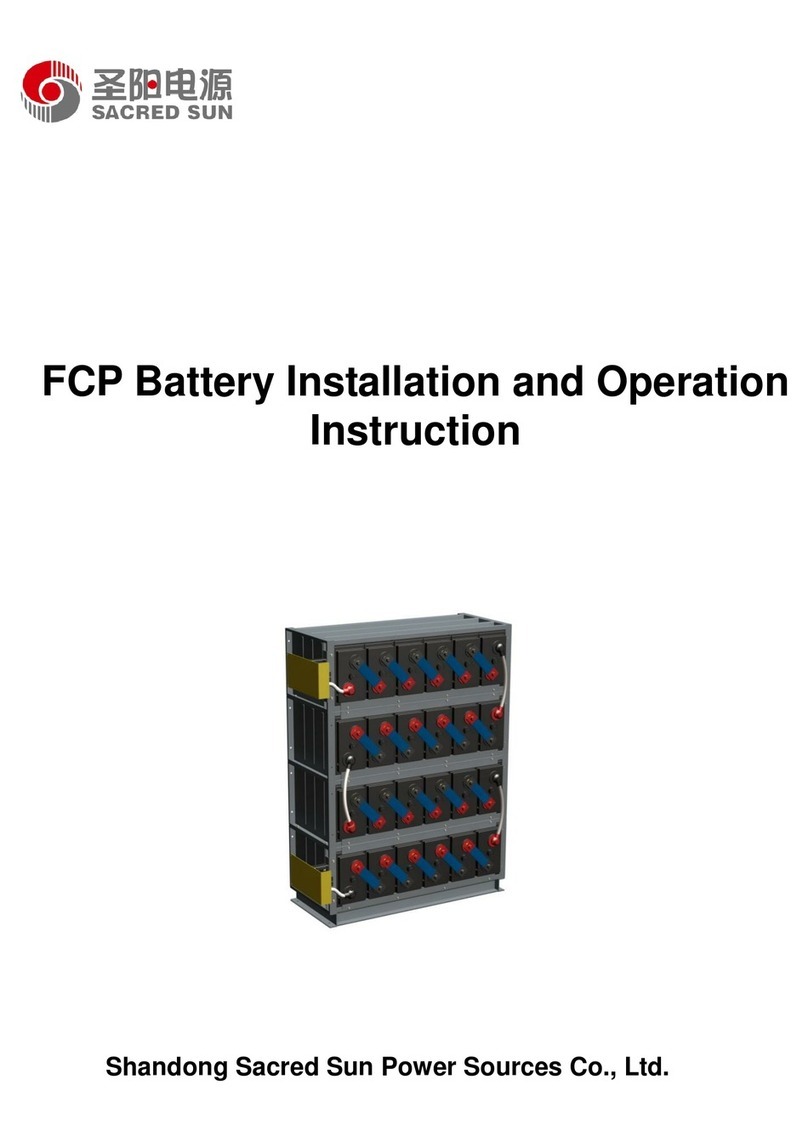
C
on
ten
t
s
Chapter I: Product Introduction
1. Product Characteristics ...............................................................................................01
2. Main Applications ........................................................................................................02
3. Battery Construction ....................................................................................................02
4. General Specifications .................................................................................................03
5. Working Principle ........................................................................................................04
Chapter II: Electrical Characteristics
1. Discharge Curve ..........................................................................................................05
2. Charge Curve ..............................................................................................................06
Chapter III: Operation and maintenance
1. Safety Instructions......................................................................................07
2. Operating Conditions and parameters .........................................................................08
3. Factors Influencing Capacity .........................................................................10
4. Temperature Effect on Battery Capacity ........................................ ..........................10
5. Recharge ............................................................................................11
6. Temperature Effect on Battery Design Life ..........................................................12
7. Charge Requirement ..................................................................................13
8. Storage.....................................................................................................13
9. Maintenance..............................................................................................15




































